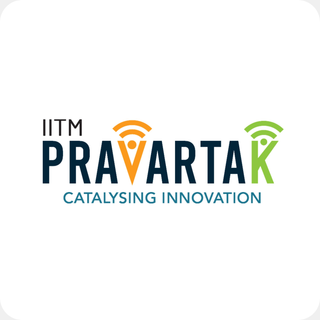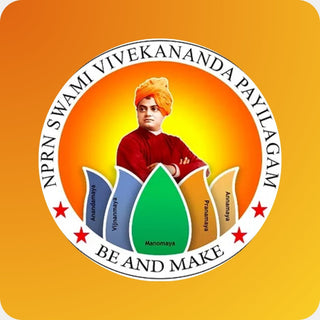Picture this: A seven-year-old in Chennai fluently switches between Tamil with her grandmother, English with her teacher, and Hindi with her visiting cousins from Delhi—all within a single afternoon. Far from being confused, she navigates these linguistic waters with the ease of a native speaker in all three languages. This child embodies the beautiful complexity of South Indian multilingualism, where ancient Dravidian languages dance alongside global English and pan-Indian Hindi in the daily symphony of family life.
For South Indian parents today, nurturing multilingual children isn't just about preserving heritage—it's about equipping them with the cognitive flexibility, cultural fluency, and communication skills needed to thrive in our interconnected world. The challenge lies not in whether to raise bilingual or trilingual children, but in how to do so thoughtfully and effectively.
The South Indian Language Landscape
South India presents a unique multilingual environment where four classical languages—Tamil, Telugu, Kannada, and Malayalam—coexist with English, Hindi, and numerous local dialects. Unlike the Hindi-belt states, where one language dominates, South Indian children often grow up exposed to multiple linguistic traditions from birth.
Tamil Nadu remains steadfast in its two-language policy (Tamil and English), reflecting decades of resistance to Hindi imposition while celebrating its 2,000-year-old literary heritage. Karnataka follows a three-language approach with Kannada, English, and a choice between Hindi and Sanskrit. Kerala balances Malayalam's poetic richness with English's global utility, while Andhra Pradesh and Telangana navigate Telugu's classical status alongside practical English proficiency.
This diversity creates both opportunities and challenges for parents seeking to raise well-rounded, multilingual children who can honour their roots while embracing global citizenship.
The Science Behind Multilingual Minds
Research consistently demonstrates that multilingual children possess significant cognitive advantages over their monolingual peers. In South Indian contexts, these benefits are particularly pronounced due to the linguistic complexity children navigate daily.
Cognitive Flexibility
Children who switch between Tamil's agglutinative structure, English's analytical grammar, and Hindi's synthetic features develop exceptional mental flexibility. Their brains become adept at managing multiple rule systems simultaneously, enhancing problem-solving abilities and abstract thinking.
Enhanced Executive Function
The constant process of selecting the appropriate language while suppressing others strengthens the brain's "control centre"—the prefrontal cortex. South Indian multilingual children often demonstrate superior attention control, working memory, and task-switching abilities compared to monolingual counterparts.
Metalinguistic Awareness
Exposure to languages from different families (Dravidian, Indo-European) provides children with an intuitive understanding of how languages work. A child who knows both Malayalam and English, for instance, develops sophisticated awareness of grammatical structures, phonetic patterns, and semantic relationships.
Cultural Code-Switching
Beyond linguistic benefits, South Indian multilingual children develop remarkable cultural intelligence. They learn to adjust not just their language but their communication style, humour, and social behaviour based on their audience—skills invaluable in our globalised world.
The Mother Tongue Foundation
The National Education Policy 2020 emphasises mother tongue education through Grade 5, and research supports this approach. For South Indian children, establishing a strong foundation in their regional language provides several crucial benefits:
- Conceptual Clarity: Complex concepts are more easily grasped when first introduced in the child's strongest language. A Tamil-speaking child learning mathematics in Tamil initially will develop a deeper numerical understanding than one struggling with English terminology.
- Emotional Security: The mother tongue carries emotional resonance and cultural comfort that foreign languages cannot replicate. Children express creativity, humour, and deep feelings most naturally in their first language.
- Cultural Anchoring: Regional languages are repositories of cultural wisdom, storytelling traditions, and community values. Children who master Tamil, Telugu, Kannada, or Malayalam gain access to rich literary and philosophical traditions spanning millennia.
Practical Strategies for South Indian Families
The Person-Language Strategy
Many successful South Indian families assign specific languages to specific people or contexts. Grandmother speaks only Malayalam, father uses Kannada, mother communicates in English, and friends interact in Hindi. This creates clear linguistic boundaries while ensuring regular exposure to each language.
Domain-Based Language Use
Different activities can be associated with different languages: religious practices in the regional language, academic discussions in English, entertainment in Hindi, and community interactions in the local dialect. This approach helps children understand when and why each language is appropriate.
Gradual Introduction
Rather than overwhelming young children with all languages simultaneously, introduce them sequentially. Establish the mother tongue foundation (ages 2-5), add English for academic purposes (ages 4-7), and introduce Hindi or other languages once the first two are secure (ages 7-10).
Cultural Immersion
Regular visits to grandparents, participation in regional festivals, exposure to classical music and dance, and consumption of regional media help children connect emotionally with their heritage languages. A child who associates Carnatic music with Tamil or Bharatanatyam with Telugu will maintain stronger motivation to preserve these languages.
Navigating Common Challenges
Language Mixing
South Indian children often create delightful pidgins—"Tanglish" (Tamil-English), "Hinglish" (Hindi-English), or "Kanglish" (Kannada-English). Rather than discouraging this natural phenomenon, parents can gently guide children toward appropriate language separation while appreciating their linguistic creativity.
Academic Pressure
With intense competition for engineering and medical seats, parents sometimes sacrifice language diversity for English-medium education. However, research shows that strong mother tongue foundations actually enhance academic performance in all subjects, including English and mathematics.
Peer Influence
Urban South Indian children may resist regional languages, viewing them as "uncool" compared to English or Hindi. Counter this by exposing them to contemporary regional cinema, modern literature, and young professionals who use regional languages confidently in global contexts.
Resource Scarcity
Finding quality books, educational materials, and entertainment in regional languages can be challenging. Digital platforms like BhashaKids, Pratham Books, and various state-sponsored initiatives now offer excellent multilingual resources for South Indian families.
The Role of Schools
Progressive South Indian schools are increasingly recognising the value of multilingual education. The best institutions:
- Offer strong regional language programs taught by passionate, qualified teachers
- Integrate cultural festivals, classical arts, and literature appreciation into their curriculum
- Encourage code-switching and translanguaging as natural learning strategies
- Provide support for children from linguistically mixed marriages
- Maintain libraries with age-appropriate books in multiple languages
Parents should actively seek schools that value linguistic diversity rather than those that treat regional languages as mere subjects to be endured.
Technology as an Ally
Digital tools can significantly support multilingual development in South Indian children:
- Language Learning Apps: Platforms like Duolingo now offer Tamil, Hindi, and English, allowing children to gamify their language learning experience.
- Digital Libraries: Websites like StoryWeaver provide beautifully illustrated stories in Tamil, Telugu, Kannada, and Malayalam, often with audio narration by native speakers.
- Video Content: YouTube channels, streaming services, and educational platforms offer age-appropriate content in regional languages, from animated stories to science experiments.
- Virtual Cultural Immersion: Online classes in Carnatic music, Bharatanatyam, or traditional crafts conducted in regional languages provide cultural context for language learning.
Building Community Support
Multilingual child-rearing works best with community backing. South Indian parents can:
- Form neighbourhood playgroups where children interact in regional languages
- Organise cultural programs showcasing multilingual talents
- Start family language clubs focused on specific regional languages
- Connect with other multilingual families for mutual support and resource sharing
- Encourage extended family members to consistently use regional languages with children
Long-term Benefits and Future Readiness
The investment in multilingual development pays dividends throughout children's lives:
- Academic Advantages: Multilingual South Indian students often excel in language-based subjects and demonstrate superior analytical skills in standardised tests.
- Career Opportunities: In India's diverse economy, professionals who can work in English, communicate in Hindi, and connect authentically in regional languages have significant advantages.
- Global Citizenship: South Indian multilingual children develop cultural sensitivity and communication skills that serve them well in international contexts.
- Heritage Preservation: These children become the bridge generation, ensuring that South India's linguistic treasures survive in increasingly globalised contexts.
Embracing the Journey
Raising multilingual children in South India requires patience, consistency, and celebration of linguistic diversity. There will be phases when children resist certain languages, periods when one language dominates others, and moments when parents question their approach.
Remember that language development is not linear. A child may seem to "forget" Tamil during an intensive English phase, only to rediscover fluency when visiting relatives. The brain retains linguistic patterns even when they're not actively used, and motivation often rekindles dormant languages.
The goal is not perfect balance but rather functional multilingualism—children who can access their full linguistic repertoire when needed, who feel proud of their heritage languages while remaining globally competitive, and who see linguistic diversity as a superpower rather than a burden.
A Living Legacy
Every South Indian child who grows up confidently multilingual carries forward thousands of years of linguistic evolution, cultural wisdom, and human creativity. They become living bridges between ancient traditions and modern aspirations, local communities and global networks, family heritage and individual dreams.
In our rapidly changing world, these multilingual children represent South India's greatest asset—minds that can think in Tamil's poetic meters, reason in English's analytical structures, communicate in Hindi's democratic breadth, and dream in the languages of their hearts. They are the future guardians of South India's linguistic treasure, equipped to share its beauty with the world while embracing the languages they need to thrive.
Your multilingual child is not juggling competing languages but weaving together the threads of human communication into something beautiful, complex, and uniquely their own. Trust the process, celebrate the journey, and watch as they grow into citizens of both South India and the world.
Sources
- Benefits of Bilingual Education for Children - Bethany High: https://bethanyinstitutions.edu.in/blogs/blog-benefits-of-bilingual-education-for-children/
- Mother Tongue: The Foundation of NEP 2020 - Sikkim Express: https://sikkimexpress.com/news-details/mother-tongue-the-foundation-of-nep-2020
- 2-language policy or 3?: After Tamil Nadu and Maharashtra - Indian Express: https://indianexpress.com/article/political-pulse/language-policy-tamil-nadu-maharashtra-karnataka-debate-10127071/
- Learning three languages essential for cognitive growth - New Indian Express: https://www.newindianexpress.com/nation/2025/Jun/06/learning-three-languages-essential-for-cognitive-growth
- Is Tamil Nadu Govt's Opposition to the Three Language Policy Justifiable? - India Foundation: https://chintan.indiafoundation.in/articles/is-tamil-nadu-govts-opposition-to-the-three-language-policy-justifiable/
- The Benefits of Bilingual Education - American University: https://soeonline.american.edu/blog/benefits-of-bilingual-education/
- Bilingualism in the Early Years: What the Science Says - PMC: https://pmc.ncbi.nlm.nih.gov/articles/PMC6168212/
- Three-language formula - Wikipedia: https://en.wikipedia.org/wiki/Three-language_formula
- Multilingual education: A key to quality and inclusive learning - UNESCO: https://www.unesco.org/en/articles/multilingual-education-key-quality-and-inclusive-learning
- Education in Mother Tongue - Current Affairs - NEXT IAS: https://www.nextias.com/ca/current-affairs/12-12-2024/education-in-mother-tongue
- National Education Policy (NEP) 2020 - mother tongue - ACQ IAS: https://acqias.com/daily-news-analysis-current-affairs/Education-in-Mother-Tongue-A-Key-Pillar-of-National-Education-Policy-NEP-2020
- Three Language Policy Under NEP 2020 - Only IAS: https://pwonlyias.com/current-affairs/three-language-policy-under-nep/
- NEP Language Policy: Importance of Mother Tongue in Indian Education - Acadecraft: https://www.acadecraft.com/blog/mother-tongue-will-be-medium-of-education-in-india/
- Three Language Formula and Language Learning in India's National Education Policy - LinkedIn: https://www.linkedin.com/pulse/three-language-formula-learning-indias-national-vikram-deshmukh-zawce
- NEP 2020- Education in Mother Tongue - Northlines: https://thenorthlines.com/nep-2020-education-in-mother-tongue/
















